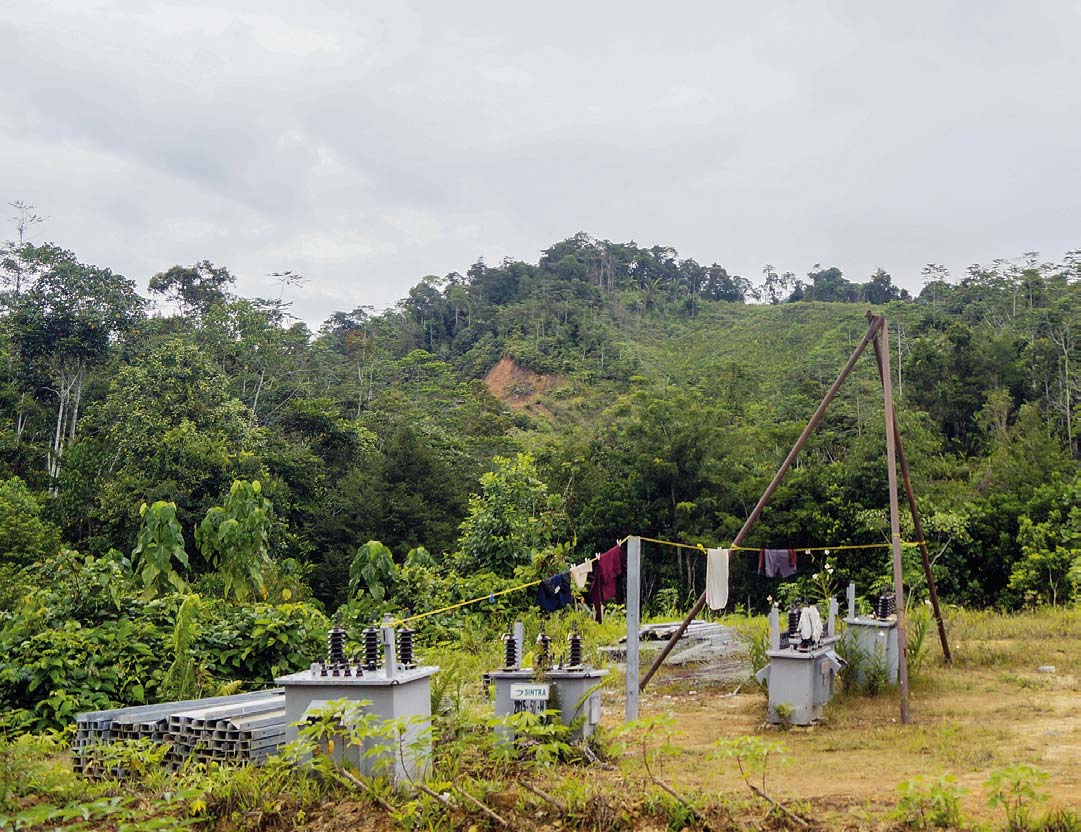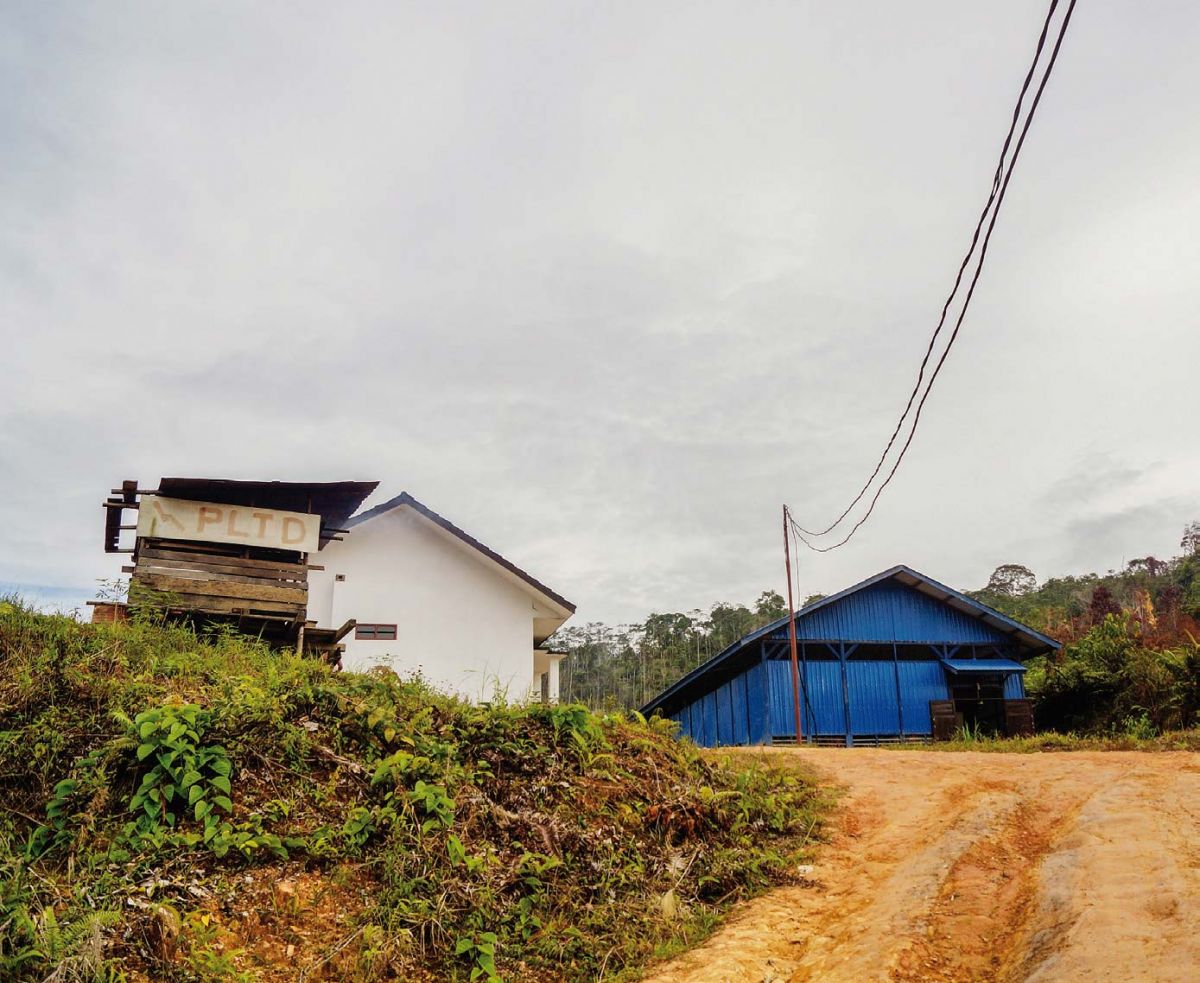When infrastructural ruins inspire political reorganization
The Indonesian border became central to the national political discourse in 2014. The newly elected president, Joko Widodo, identified the border as one of the central issues of his administration. Widodo argued that the state had been absent for people on the territorial margins, and that citizens on the border had less access to welfare than those located closer to urban centers. In a bid to change the fate of the marginalized citizens on the border, Widodo campaigned for “developing Indonesia from the margins”. In so doing, Widodo utilized a developmentalist paradigm that predated his regime. The paradigm is an invitation to alter the gaze toward the border, from seeing it as the backyard to seeing it as the front yard of the nation.
Altering the gaze toward the border: producing the state’s front yard
This development paradigm, originally conceived by the Indonesian National Planning Agency of the previous regime, imagines the state space as a house, where the border functions as the front yard or the front porch. In a culturally-specific logic, this paradigm carries the idea that an ideal house owner should prioritize spending resources and time to assuring the propriety of the appearance of the front yard rather than dealing with the backyard, as the latter is invisible to the eyes of outsiders. Here, the front yard is understood to be representative of the quality of the people who inhabit the house. Just like this ideal house, Widodo sees the border as representing the quality of Indonesia as a nation. The current condition of the Indonesian border area is problematic for the regime, however, because despite ideally serving as the front yard, it looks more like a backyard in that, in the regime’s judgment, it is characterized by impoverishment, rurality, isolation from the domestic space, and illicit cross-border dependency.
In a bid to materialize the front yard border, Widodo’s administration designed development planning that centers on the idea of designating new growth poles on the border. Border villages are handpicked by state officials to be these future growth centers. State officials expect these rural growth centers, through territorial infrastructural development projects, to flourish as prosperous border cities in the future. This article focuses on the experience of one such border village: Long Nawang village. The village is undergoing a district-splitting process and is projected to become the capital of a new border district called Apau Kayan. Noticeable infrastructural development as part of the current regime’s materialization of the front yard border has started in the village. While the regime often marks the infrastructural development at the margins as a point of differentiation from the previous regime, the reinvigoration of state power in the form of infrastructural development is not new for the village’s inhabitants. In fact, behind the existing infrastructure in Long Nawang rest collective memories of the state’s failure in delivering its promises.
The generative effect of failure
The construction of infrastructure always carries political significance. In the context of border governance, it carries the imposition of the state’s territoriality—as both the marker of sovereign space and as biopolitical intervention. But what happens when such a political campaign encounters the memory of failure? In this section I will look at the way infrastructural ruins in the village become associated with failure and the way that failure becomes politically generative for the villagers amid the production of the front yard border.
As I have indicated, the on-going infrastructure development in Long Nawang village is just another layer on the palimpsest of infrastructural development. The landscape of the village has already been decorated with infrastructural ruins. These infrastructures are ruinous because, despite their completion, they have never fully and felicitously performed their function. In other words, these material structures are ruinous because they fail to comply with their objectification.[1] Infrastructural ruins, however, are everything but material superfluity. Here, I look at infrastructure as having a dialectical relationship with politics.[2] Consequently, infrastructure, in any of its material-temporal forms, simultaneously embodies political power of the state and the possibility of political practice. The temporality of ruin, that can be judged only through its (in)felicitous material expression, plays a central role in inaugurating spaces for political action. Such an understanding is possible only when we realize that infrastructure is never built for eternity, and each time an infrastructural project is carried out, the materiality of infrastructure oscillates between the time-space of ruination and that of renewal.[3] Thus, ruin is not merely an autonomous temporal phase in some teleological timeline. Rather, ruin should be imagined within a non-teleological temporality of infrastructure, where renewal is always standing within its horizon. Imagining ruin in this way enables us to go beyond the narrative of infrastructural violence—the absence of public service as a form of violence—and instead look at the moment of infrastructural failure as generative to political action.[4] That is, when ruins inaugurate a space for political actions.
The materiality of infrastructural ruins in Long Nawang village preserves the memory of the state’s incapacity in fulfilling its promises. Villagers experience this failure on a daily basis. For instance, despite a tall base transceiver tower having been erected in 2013, four years later a mobile signal still appears only sporadically in the village due to the dearth of gas supply. In spite of having solar and hydro power plants, villagers still rely on the village office’s diesel machine to access up to twelve hours of electricity per day. The sporadicity of public service in juxtaposition with the visibility of infrastructural materiality reminds the villagers on a daily basis that the relationship between the enactment of infrastructure and the availability of basic public services is not necessarily parallel. Each time the village’s electricity is turned off at 6 AM, the villagers receive a reminder about the state of ruination that is eating away the infrastructures in their village.
It is within the time-space of ruin that the experiencing of failed objectification of infrastructural promises becomes politically generative for the villagers amid the reinstatement of infrastructural development on the border. Caught between the memory of failure and the desire to take part in the front yard future, the village office has decided to introduce a new political organization: a development watch apparatus. This apparatus was created by a newly elected village head in 2017. At the time, the Widodo administration had built a diesel power plant in the village. Nevertheless, a familiar story unfolded as the electrical poles to distribute electrical power failed to arrive. Thus, the new diesel power plant quickly became an infrastructural ruin. As the village cannot bear any more non-functioning infrastructures, the village governance has given the development watch apparatus tasks to: (1) monitor the on-going development project and (2) solve the problem of infrastructural ruins through meeting with relevant stakeholders.
When I visited the village in 2018, I witnessed the fruit of the development watch apparatus. Troubled by the ruinous telecommunication tower and solar power plant, the village governance had sent development watch officials to negotiate with district-level and province-level state officials. The village officials proposed to power the telecommunication tower through the non-functioning solar power plant built by the province-level state institution. All this time, the solar power plant could not function because no official handover had taken place after the completion of its construction. The proposal was approved, and just before I left the village, a state technician and some villagers were working collectively to connect cables from the power plant to the telecommunication tower. Today, as both the telecommunication tower and the solar power plant have been moved to the time-space of renewal, villagers can finally have a fully working mobile signal.
Reflection
Infrastructure fails all the time, and the failure can take many forms. Sometimes it occurs before a structure is completed. Other times, like in this case, it fails despite its material completion. When infrastructure fails, that is when it does not adhere to the promise that it embodies, infrastructure becomes a ruin. In parallel with the special issue theme, however, I have illustrated how ruin is anything but the end of history. Far from being dormant, ruin is experienceable and inaugurates spaces for political reorganization that centers on the act of renewal.
Understanding the generative effect of infrastructural ruin is important in the current moment. The utilization of infrastructural development as a means to unlock the promise of a better future is not an isolated case from insular Southeast Asia. We need look no further than to the Chinese state’s One Belt One Road (OBOR) initiative that seeks to use cross-border infrastructure development to add a modern layer to the Silk Road palimpsest. This grand initiative promises fertile ground for investigations into the entanglement of infrastructure and politics. As ruination always seems to be on the horizon of infrastructural development of whichever scale, the question that we may prepare to answer pertaining to OBOR is, what kind of political space will that infrastructure evoke when it enters the ruin time-space?
Sindhunata Hargyono, Doctoral Student, Northwestern University, Illinois
[1] Carroll, T., Jeevendrampillai, D., Parkhurst, A., & Shackelford, J. (eds) 2017. The Material Culture of Failure: When Things Do Wrong. New York: Bloomsbury.
[2] Schnitzler, A. von. 2016. Democracy Infrastructure: Techno-Politics and Protest after Apartheid. Princeton: Princeton University Press.
[3] Gupta, A. 2018. ‘The Future in Ruins: Thoughts on the Temporality of Infrastructure’, in N. Anand, A. Gupta & H. Appel (eds) 2018. The Promise of Infrastructure (pp.62-79). Durham: Duke University Press.
[4] Appel, H. 2012. ‘Walls and white elephants: Oil extraction, responsibility, and infrastructural violence in Equatorial Guinea’, Ethnography 13(4):439-465.

